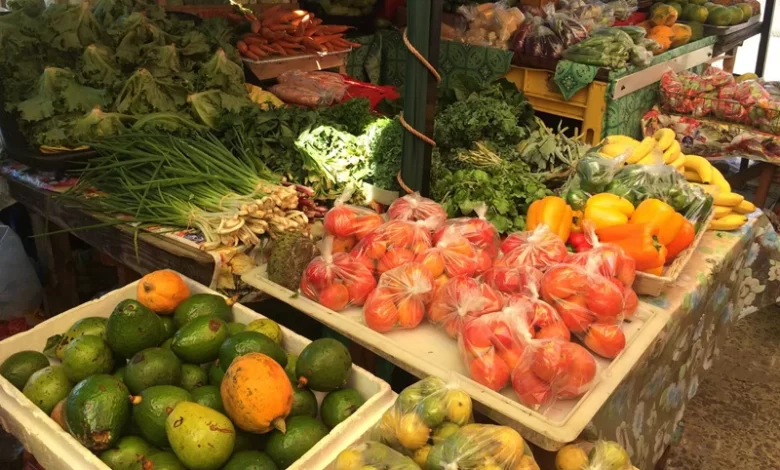Dominica’s Agricultural Exports

Dominica’s agricultural exports have historically played a crucial role in the nation’s economy, with bananas once dominating its export sector. In 1991, bananas accounted for a remarkable 61.3% of the country’s total agricultural exports; however, shifts in global trade, climate-related challenges, and evolving market demands have since prompted the country to diversify its agricultural sector. Today, citrus fruits, root crops, spices, and exotic products have become integral to Dominica’s agricultural export strategy, supported by government policies, international trade partnerships, and modernisation initiatives.
Historical Context of Dominica’s Agricultural Exports
Dominica’s agricultural sector has been dominated by smallholder farmers cultivating a diverse range of crops on farms that range in size from 1 to 5 acres for decades. In 1991, approximately 25,000 acres were under cultivation, with intercropping methods ensuring resilience against crop failures and soil depletion. Despite its dominance, banana farming faced multiple setbacks, including disease outbreaks, climate-induced disasters, and changing EU trade regulations, which necessitated diversification.
Key Agricultural Export Commodities
The Key Agricultural Export Commodities of Dominica reflect its shift from traditional exports to a diverse and resilient agricultural sector, focusing on sustainability, market expansion, and value-added production to enhance global competitiveness.
Bananas and Citrus Fruits
- Once the leading cash crop, bananas remain a significant component of interregional trade, particularly within CARICOM markets.
- Citrus production, including oranges, grapefruits, and limes, has increased, with 21,000 tons of grapefruit, 1,000 tons of lemons and limes, and 8,000 tons of oranges produced in 1999.
Coconuts and Value-Added Products
- Coconuts are exported in raw and processed forms, including coconut oil, soaps, and cosmetics, contributing to both local consumption and export revenues.
Root Crops, Spices, and Speciality Exports
- Taro, dasheen, yams, and sweet potatoes are increasingly in demand, catering to regional and international Caribbean markets.
- Bay leaves, nutmeg, vanilla, and coffee are niche exports gaining popularity, particularly in the organic and gourmet food sectors.
Exotic Fruits and Ornamental Plants
- Mangoes, guavas, passion fruit, and papayas are exported to Caribbean, North American, and European markets, often as fresh produce or processed items, such as fruit juices and jams.
- Cut flowers, anthuriums, and heliconias are exported to floral markets, contributing to the growth of an eco-friendly agricultural industry.
Economic Contribution and Trade Partners
Despite challenges, agriculture remains a major contributor to Dominica’s economy, with primary agricultural products constituting 67.3% of the total export value in 1991. As of 2024, the United States, the United Kingdom, and CARICOM states remain key trading partners, with U.S. agricultural exports to Dominica amounting to $11.78 million.
Government Policies and Institutional Support
The Government of Dominica has introduced several policies and initiatives to enhance agricultural exports, trade opportunities, and climate resilience. These efforts ensure that farmers have access to global markets, technical support, and financial aid to improve productivity and sustainability.
To increase international trade opportunities, the National Export Strategy (NES) focuses on:
- Expanding market access for Dominican agricultural products.
- Strengthening export standards and certifications, particularly for organic and eco-friendly goods.
As part of Dominica’s response to global trade shifts, the National Adaptation Strategy (NAS) addresses:
- The decline of EU banana trade privileges by promoting crop diversification.
- The shift toward value-added exports such as processed agricultural goods.
Support for banana farmers continues through the Banana Accompanying Measures (BAM) Program), which:
- Provides technical assistance and investment in banana production.
- Helps farmers meet international quality standards and modernize farming practices.
Disaster recovery is a priority under the Emergency Agricultural Livelihoods and Climate Resilience Project, which:
- Aids farmers recovering from hurricane damage.
- Ensures long-term food security and economic stability through funding, farm inputs, and training.
Institutional support is provided by key organizations, including:
- Dominica Export Import Agency (DEXIA) – Facilitates trade agreements and export certifications.
- Food and Agriculture Organization (FAO) – Supports research, innovation, and policy development.
- Inter-American Institute for Cooperation on Agriculture (IICA) – Provides technical expertise, market research, and agricultural training.
Through government-backed policies and institutional collaborations, Dominica is advancing its agricultural export industry, ensuring economic resilience, sustainability, and international competitiveness.
Challenges Facing Agricultural Exports and Future Strategies
Dominica’s agricultural exports face several challenges that impact productivity, competitiveness, and sustainability. While agriculture remains a key economic sector, issues such as climate change, trade barriers, and labor shortages require strategic interventions to ensure long-term growth and market resilience.
Challenges Facing Agricultural Exports
One of the biggest obstacles to agricultural exports is natural disasters and climate change.
- Hurricanes and extreme weather events frequently destroy crops, infrastructure, and transportation networks, disrupting supply chains.
- Soil degradation and deforestation threaten long-term agricultural sustainability, reducing arable land and water availability.
Market access and international trade policies also present hurdles for farmers and exporters.
- Shifting European and North American trade policies have an impact on export competitiveness, particularly for traditional crops.
- Farmers require better access to financing, modernized infrastructure, and certification programs to comply with international market standards.
The issue of labor shortages and rural decline further exacerbates agricultural challenges.
- Many young Dominicans are migrating to urban areas, reducing the workforce in farming communities.
- The ageing agricultural labour force affects the adoption of modern farming techniques and overall productivity.
Future Outlook and Strategic Directions
To address these challenges, Dominica is investing in sustainable agricultural practices.
- Encouraging organic farming, agroforestry, and eco-friendly pest management to maintain soil fertility and reduce reliance on chemicals.
- Expanding certified organic produce exports to premium global markets.
Improving infrastructure development and investment is also a priority.
- Enhancing road networks, irrigation systems, and post-harvest storage facilities to boost efficiency in supply chains.
Innovation in agricultural technology will drive the next phase of transformation.
- Promoting smart farming techniques, greenhouse technology, and precision agriculture to increase crop yields and climate adaptability.
Finally, Dominica aims to explore new export markets and expand its trade footprint.
- Strengthening trade ties within CARICOM, Europe, and emerging Asian markets.
- Developing value-added agricultural products, such as essential oils, fruit concentrates, and specialty teas, to enhance export value and diversification.
By addressing these challenges through innovation, infrastructure development, and policy reforms, Dominica can strengthen its agricultural exports and build a more resilient, competitive, and sustainable farming sector.
A Pathway to Agricultural Resilience and Growth
Dominica’s agricultural exports remain a vital pillar of the economy, having evolved from a banana dependency to a diversified and sustainable sector. Through government initiatives, private sector investments, and international collaborations, Dominica is positioning itself as a leader in organic and speciality agricultural exports. While climate change, market access, and labor shortages remain challenges, continued innovation, resilience, and sustainability efforts will ensure that agriculture remains a driving force for economic development and food security.




